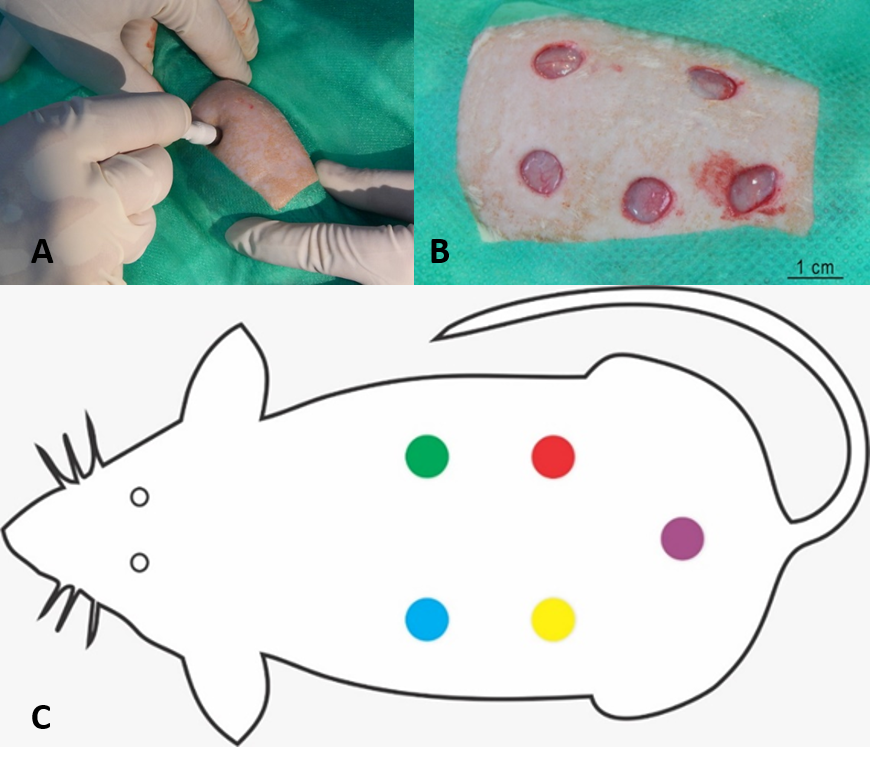Copaiba oil-resin (Copaifera langsdorfii Desf.: Caesalpiniaceae) associated with laser therapy for skin wound treatment in Wistar rats
DOI:
https://doi.org/10.21708/avb.2021.15.4.10017Abstract
Alternative protocols for the treatment of skin lesions have been developed with the use of techniques such as photobiomodulation and phytotherapy, aiming to optimize this process. To evaluate the effectiveness of copaiba (Copaifera langsdorffii) oil-resin and low-level laser therapy for treating cutaneous wounds, 15 Wistar rats (Rattus norvergicus) were used, in whom five 8-mm lesions were produced. The following protocols were applied: negative control group (T1); positive control group (T2); laser therapy with AsGa (904 nm), continuous, focal mode for 10 s, dosage of 4 J/cm² (T3); copaiba oil-resin (T4); and association group (copaiba and low-level laser) (T5). The efficacy of each technique was evaluated based on macroscopic aspects of the lesion, wound healing rate, and histopathological analysis (inflammatory infiltrate and collagen expression). The Kruskal-Wallis test was used for statistical analyses (P> 0.05). Copaiba treatment showed an advantage in type III collagen expression, whereas laser therapy demonstrated an enhanced capacity for tissue regeneration. The significant advantage obtained from the association treatment is the improvement of the macroscopic aspect of the wound, with a reduction in crust formation.
Downloads

Downloads
Published
Issue
Section
License
Autores que publicam na Acta Veterinaria Brasilica concordam com os seguintes termos: a) Autores mantém os direitos autorais e concedem à revista o direito de primeira publicação, com o trabalho simultaneamente licenciado sob a Licença Creative Commons Attribution que permite o compartilhamento do trabalho com reconhecimento da autoria e publicação inicial nesta revista. b) Autores têm autorização para assumir contratos adicionais separadamente, para distribuição não-exclusiva da versão do trabalho publicada nesta revista (ex.: publicar em repositório institucional ou como capítulo de livro), com reconhecimento de autoria e publicação inicial nesta revista. c) Autores têm permissão e são estimulados a publicar e distribuir seu trabalho online (ex.: em repositórios institucionais ou na sua página pessoal) a qualquer ponto antes ou durante o processo editorial, já que isso pode gerar alterações produtivas, bem como aumentar o impacto e a citação do trabalho publicado (Veja O Efeito do Acesso Livre).


 Esta obra está licenciada com uma Licença
Esta obra está licenciada com uma Licença 